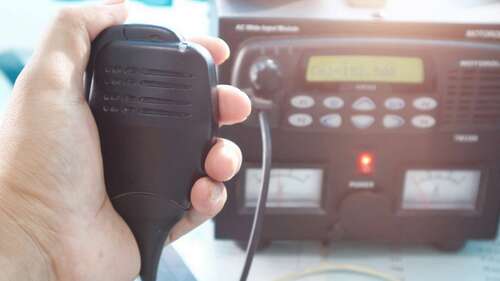
What’s a ham radio list without a base station? These behemoths stay fixed in one location (like a home or office), generate more power, offer multi-band communication, and boast external microphones. However, they also require a bit more advanced experience with ham radios (or a great teacher), a second-tier FCC General Class license, and can run you upwards of $1000. So it’s not quite what we’d call a beginner option.
However, you’ll have difficulty finding a better entry-level base station than ICOM’s IC-7300. It has 100 watts of output power and a radio frequency Direct Sampling System. That means it digitizes radio frequencies before they hit the receiver. It eliminates any noisy intermediate frequencies to deliver a clearer sound that differentiates it from other entry-level base stations.
As if that wasn’t enough to put the IC-7300 in a league of its own, it also boasts a large LCD touchscreen, simplifying ham radio operations and displaying information similar to top-of-the-line radios. You can adjust the settings, check audio frequencies, and see signal strength alterations through its high-resolution waterfall function. It also has a built-in antenna tuner, 101 channels, an SD memory card slot, and a multi-speed fan to help cool this radio monster. It retails for a hefty $1,099.95, which is more affordable than other base stations. But don’t just listen to us. Ham Radio Prep, a program offering licensing prep courses and other resources, ranked the ICOM IC-7300 as its top ham radio for beginners, highlighting its seemingly endless list of features that will keep you learning as you progress in the industry.

